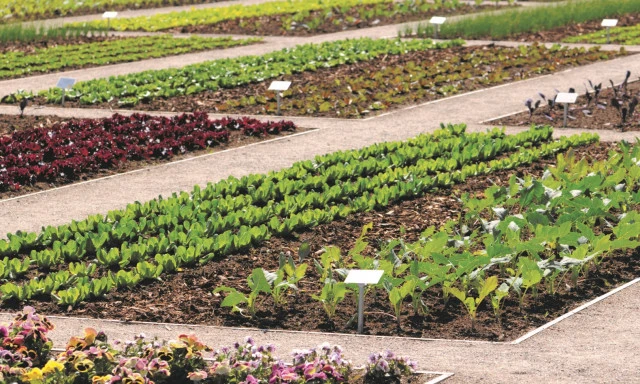Here are some fascinating facts about what is in your soil
We think of soils as sandy, gritty stuff in flowerbeds, under lawns and pasture and generally covering the ground. Plants grow in it and it sticks to our gumboots when it is wet. But there is much, much more to soils than sandy, gritty stuff.
All soils are largely made up of tiny mineral particles. The size of mineral most abundant in your soil determines whether you have sand, loam, or clay. This mineral composition of the soil is called the soil's "texture."
Sand particles are small, but compared to other soil particles, they are the largest. The other two main categories of soil particles are silt, which is smaller than sand, and clay, which is still smaller.
- Sand - Water and nutrients move through sandy soils fast, meaning both need more frequent replenishing. A handful of sandy soil won't clump or hold a shape when you press it.
- Loam - These soils have a beneficial mix of all the mineral particle sizes.
- Clay - Microscopic clay particles pack together tightly. Water and nutrients move into and through clay soils slowly. Clay soils are heavy, and you can easily form a ball or ribbon with a clump of moist clay soil in your hand.
Most soils are mixtures of all three particle sizes but in varying proportions. A predominance of sand particles makes a lighter, more open soil with good drainage and aeration; lots of channels for air and water circulation. Minute clay particles pack together tightly making a clay soil heavier, denser, and with less favourable air and water circulation.
The other ingredients of soil include organic matter (living and non-living), water and air. The living and previously living contents of the soil form a large proportion of healthy soils; healthy in that they provide a good substrate for the healthy growth of plants.
There is a food web of living and dead organic material in soils in which the organisms exchange energy and nutrients. This is a list of food web roles that organisms in the soil play:
- Algal eaters – organisms that eat algae.
- Bacterial partners of plants – symbiotic bacteria that live in or on the roots of plants.
- Coprophages – organisms that feed on the waste products of other organisms.
- Decomposers – organisms that consume and break down organic matter.
- Detritivores – organisms that feed on dead organic matter. These are usually decomposers.
- Fungal partners of plants - symbiotic fungi that live in or on the roots of plants.
- Fungivores – organisms that feed on fungi.
- Herbivores – organisms that feed on plants.
- Parasites – organisms that live or feed on other organisms, often without killing them.
- Predators – organisms that feed on other living organisms, usually killing them.
- Producers – organisms that produce their own food from air, water, nutrients and energy such as light.
- Scavengers – organisms that feed on dead organic matter; like detritivores and decomposers.
Many organisms will fit into more than one of these groups.
How Many Organisms are in the Soil?
The number of organisms in the soil varies depending on the soil type, the conditions and the season. The numbers of different groups of animals tend to be in inverse proportion to their size. So, for a square metre of soil one might typically expect to find:
- 1 vertebrate (bird, rodent, etc.)
- 100 molluscs (slugs and snails)
- 3,000 worms
- 5,000 insects
- 10,000 rotifers and tardigrades
- 50,000 springtails
- 100,000 mites
- 5,000,000 nematodes
- 10,000,000,000 protozoa
- 10,000,000,000,000 bacteria and actinomycetes
The vast majority of these organisms either benefit or do no harm to the soil and the plants growing in the soil. When there are high numbers of these beneficial and harmless organisms because the conditions in the soil suit them, they outcompete pest and disease organisms and your plants remain healthy. Usually, it is only when the conditions in the soil and/or food webs are out of balance, or there is not sufficient organic material and humus in the soil, are the opportunistic pest and disease organisms likely to do serious harm to the plants. And the plants may be less able to protect themselves due to stress.
See here for more about the life in your soil and how to encourage beneficial organisms.
As well as these live organisms there is much dead material which the decomposers, detritivore and scavengers reduce to humus which is the mix of complex organic compounds that are difficult to break down and provide essential water retention, soil structure and slow-release energy for soil organisms. Humus gives good soil its deep dark brown colour.
See here for more on humus, humates and humic acids and how to increase them in your soil.
David Brittain
Kiwicare


